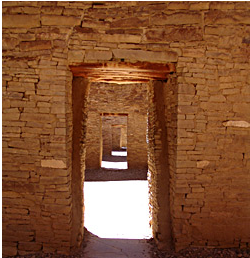Publication Date
Summer 5-1-2010
Abstract
In this dissertation, I investigate the socio-political processes that led to the collapse of the Late Moche political communities located in the Lower Jequetepeque Valley, North Coast of Peru. During the Late Moche phase (AD 600 to 850), the human populations of this valley evidenced an interesting case of political fragmentation and internal conflict. The Moche collapse in the Jequetepeque Valley is approached from the perspective of one of the largest power centers of the region: the fortified site of Cerro Chepén. This site occupies the upper and eastern slopes of a hill, located in a relatively central position within this valley. The site is significant for presenting a sophisticated system of fortifications, and two clearly-defined occupation sectors (which I call Cerro Chepén Alto and Cerro Chepén Bajo). Of these two sectors, Cerro Chepén Alto distinguishes itself by occupying a dominant position on top of the hill, and by being surrounded by the most remarkable defenses. This sector houses up to nine monumental buildings. The four that occupy an advantageous, central position integrate architectural spaces of highland design. Three of these four central buildings were excavated to evaluate the hypothesis that they housed highland intruders. The assessment of the cultural identity of the buildings occupants was based on two aspects of the process of materialization of ideology that is common to most complex societies \u2013 namely, the design of monumental architecture and the style of prestige objects. The results of the architectural and fine ceramic analyses led me to conclude that the occupants of these structures came from sites located in the nearby highlands, possibly outliers related to the area of interaction of the ceremonial center of Marcahuamachuco. Paleoenvironmental data suggest that their arrival in the lower section of the valley coincided with a period of decreased rainfall in the highlands. The careful planning of the fortified redoubt suggests that the newcomers not only participated in the internal conflict that affected local communities, but possibly exacerbated existing tensions. The collapse would have arisen due to the tensions that are inherent to situations of internecine warfare.'
Keywords
Cerro Chepen, Late Moche phase, Collapse of complex societies, Cultural migration, coastal-highland interaction, Cerro Chepen Site (Peru)
Document Type
Dissertation
Language
English
Degree Name
Anthropology
Level of Degree
Doctoral
Department Name
Anthropology
First Committee Member (Chair)
Boone, James
Second Committee Member
Bawden, Garth
Third Committee Member
Crown, Patricia
Fourth Committee Member
Cutright, Robyn
Recommended Citation
Rosas, Marco. "Cerro Chepen and the Late Moche Collapse in the Jequetepeque Valley, North Coast of Peru." (2010). https://digitalrepository.unm.edu/anth_etds/57



